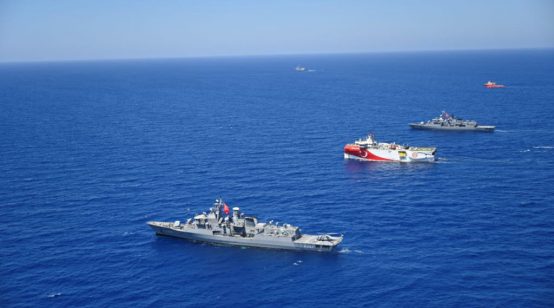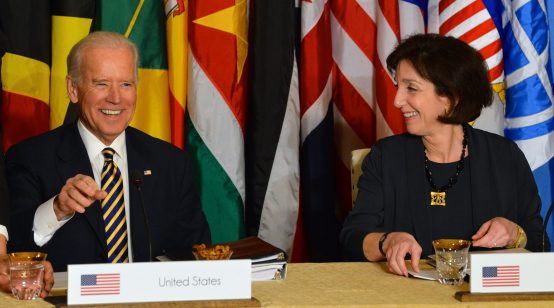
Crude oil transit is the wild card of the global energy system. Oil producers and consumers act in mostly predictable, economically explainable ways, but when oil needs to be transported over pipelines or seaborne chokepoints, states can act in malleable, murky ones. This summer’s renewed threat that Iran will close the Strait of Hormuz, its commercial lifeline to the world, is a perfect example.
On the surface, the idea that Iran would willingly close Hormuz is frankly insane. Cutting off its major export chokepoint would induce a short-term financial crisis and undermine its long-term credibility with its major Asian customers, including China, Japan, South Korea and India. It amounts to commercial suicide.
The threat reemerged in May 2018, after U.S. President Donald Trump cancelled the Iran nuclear deal, and imposed a new round of sanctions on Iranian oil exports. U.S. National Security Advisor John Bolton stated that the administration’s goal through the sanctions is to drive Iranian oil exports to zero. If so, they are working. Iran’s exports have fallen precipitously this summer, from 2.32 million barrels per day (mbpd) in July to 1.68 mbpd in the first half of August.
Since a Hormuz closure would achieve Bolton’s goal in one swift stroke, it is worth asking: is the United States trying to bait Iran into closing Hormuz?
Same performance, different market
Iran is not innocent. It has issued verbal threats to close Hormuz and conducted naval drills this summer. These acts accrue domestic political capital with its people without reducing oil exports. The regime cannot afford to appear bullied by U.S. rhetoric.
Yet verbal threats are far different than a actual closure, a lesson we learned in 2011-12. During this period, oil prices were above $100 per barrel, but today’s context is different. Prices are more susceptible to downward swings due to competition from U.S. shale, natural gas, and clean energies. Geopolitical risk has also seemingly been priced out of the market after the Arab uprisings and decline of Venezuela. Iran has far less leverage in today to commit commercial suicide than in 2011-12.
Iran’s regional strategy is to press its clients in Syria, Iraq, Lebanon, Gaza and Yemen against states backed by Saudi Arabia and the United States. In this context, Iranian pressure on the seaborne chokepoint between the Red Sea and Indian Ocean, the Bab el-Mandeb, makes sense. In June, Houthi rebels in Yemen attacked two Saudi Aramco tankers, causing slight damage. Not only can Iran shirk responsibility for incidents executed by its clients, but it can also undermine exports of Arab Gulf producers, who rely on Bab el-Mandeb to transit oil to the Mediterranean and Europe. Iran sends nearly all of its oil East.
Can it even be blocked?
Then and now, it is arguably the case that Iran cannot even succeed in blocking the strait if it wanted to. Iran can certainly launch mining operations, but the U.S. navy has proved its ability to countermand them. In 2012 and 2013, it held naval exercises alongside allies to practice for such an event. Another option for blowing through mined waters is using double-hulled tankers, which could withstand a single explosion. Global oil stocks could also withstand a closure for some time. This summer’s decline in Iranian exports has put customers on notice about the future. Lastly, Saudi Arabia and the United Arab Emirates have 4.3 mbpd in capacity in bypass pipelines. There has even been renewed discussion of a bypass canal across the Saudi desert to the Red Sea. Iran, meanwhile, has no bypass pipelines.
Transit wars
Oil transit has helped start several Middle East wars. Egypt’s nationalization of the Suez Canal Company led to the 1956-7 Suez Crisis. Egypt, alongside Syria, also sprung a surprise strike in 1973 against Israel in order to reopen the Israel-closed Suez Canal. Saudi Arabia sanctioned the attack – it too wanted the canal reopened – and led the Arab oil embargo. The Tanker War, a subset of the 1980s Iran-Iraq War, is the most relevant to today. Iran blockaded Iraqi oil exports from leaving the Gulf, while the U.S. navy worked to countermand Iranian efforts and keep oil flowing to the global economy. American memories of this war shape U.S. policy towards Iran, the Gulf and Hormuz.
Even verbal threats to oil transit can trigger war. Israel launched a preemptive attack against Egypt in 1967 partly because the latter threatened to close the Straits of Tiran, which would have blockaded Israel’s oil imports. The potential for conflict over the Strait of Hormuz is similarly real. Iran’s verbal threats could backfire, even if it does itself not close the strait.
This round of Hormuz hysteria is clearly a gambit by Washington to put further pressure on Iran. Washington is playing a strong hand, but will share responsibility for starting a war in the Gulf, whose consequences to the oil market would be the least of our concerns.






[…] گزارش گروه انرژی نفتخبر از انرژی ریپورترز، ترانزیت نفت خام را باید کلید تعادل در سیستم جهانی […]